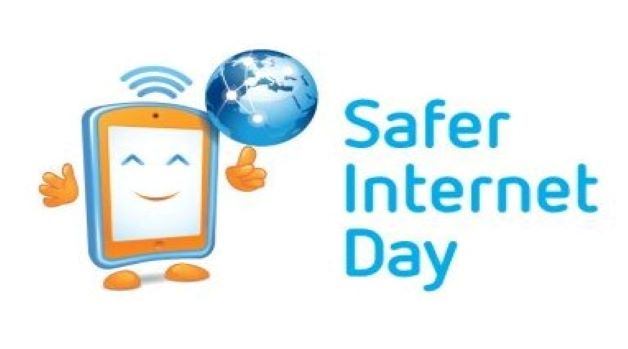E-Business
Safer Internet Day Highlights Africa’s Online Challenge

Yesterday the world marked Safer Internet Day, a reminder that emerging online issues like cyber bullying and harmful online experiences continue to pose a threat to users, especially, the youth.

Mobile telecommunications services provider Uswitch claims over half of 12 -15 year-olds have had some form of harmful online experience, one in eight young people have been bullied through social media, and 53% of 11-16 year-olds have seen explicit material online.
Uswitch has also found that six in ten parents are aware of the various technical tools and parental controls available, but only a third actually use them.
The company has emphasised the role of parental controls, which it explains is a set of measures and limits you can apply to your child’s internet devices and accounts to prevent access to upsetting or inappropriate content online.
Uswitch identifies several types of parental controls, including websites, smartphones, online gaming and streaming, which can be used to manage search engines, prevent money being spent online, keep track of your child’s location, to teach cyber safety habits and etiquette, and implement screen time limits.
Max Beckett, broadband expert at Uswitch.com says: “With the online world becoming increasingly intertwined with our children’s lives, parental controls should be a tool that all caregivers know how to use. Sadly, with only one in three parents currently using the controls available to them, there needs to be a better understanding on how to use them.
“It’s very easy to stumble upon harmful content on the web, so it’s natural that we would want to protect our children from that. However, parental controls are useful for much more. They give us the ability to teach our children how to use the internet wisely, and what is trustworthy or not — which are critical life skills in this day and age.
“While it’s frustrating that different devices and platforms all have different sets of parental controls, setting them up on as many devices as you can is the best way to plug all the gaps. It will help you ensure that your child can enjoy everything they want from the internet with minimal risks to their safety.”
Africa under attack
The message to do as much as possible to make the internet safer is amplified by market research from cybersecurity specialists like Check Point.
According to the Check Point Software 2022 Security Report, Africa experienced the highest volume of cyber attacks in the world last year. The company stressed that organisations and consumers must become more aware of the threats they face in the digital landscape.
During the past six months, Check Point Research has seen an increase in cyber attacks targeting the government, insurance, and finance sectors in South Africa.
The company adds that on average, there have been more than 1 450 attacks per week in the country.
“This trend will likely continue over the coming months as more threats start coming from cloud and mobile platforms. Threat actors will not limit their focus to South Africa and will potentially target countries across the continent,” says Check Point.
It points to the impact of cloud adoption in Africa and the emergence of supply chain attacks, as well as of remote workers and increasing concern over malware.
Check Point anticipates that these supply chain attacks will continue through 2023 with a significant amount of risk coming from the open source community.
“Typically, suppliers relying on these open source systems have not properly vetted them or have been lax in managing these environments, resulting in cybersecurity weak points emerging,” Check Point continues.
Globally, ransomware was the number one threat in 2022. Uncertainty across the various African economies around service delivery and critical infrastructure will likely see more countries face cyber attacks targeting the government.
According to Check Point, the number of cyber threats reported to the Kenyan National Cyber Crime Centre (NCC) in the first quarter of the 2022/23 year rose by almost 200%.
The Communications Authority of Kenya (CA) said the number of cyber attacks detected in the country in the three months ending September 2022 stood at 278 million. This is almost three times the number of threats reported in previous quarter.
The country has implemented a number of initiatives to strengthen its cybersecurity infrastructure, including the establishment of the National Cyber Security Authority and the National Computer Incident Response Team (National KE-CIRT/CC).
Their mandate is to coordinate response and manage cybersecurity incidents nationally and to collaborate with relevant actors locally, regionally, and internationally.
“There is simply no respite from ransomware and increasingly sophisticated cyberattacks. This puts users under increasing pressure to keep up to date with the latest trends in the threat landscape. We know that these criminals are continually evolving in how they develop and perpetrate attacks.
“With smaller, more agile malicious groups looking to exploit any potential weak points in company and end user defences, people cannot afford to not take cybersecurity seriously,” says Pankaj Bhula, Regional Director for Africa at Check Point.
E-Business
Microsoft Server Hack Likely Solo Actor, Thousands at Risk

A widespread cyberattack targeting Microsoft’s (MSFT.O) server software used by thousands of government agencies and businesses for internal document sharing was likely orchestrated by a single actor, a cybersecurity researcher said on Monday.

Microsoft issued an alert on Saturday warning of “active attacks” on on-premise SharePoint servers.
The company clarified that SharePoint Online, part of the Microsoft 365 cloud suite, was not affected by the exploit, which is considered a “zero-day” vulnerability due to its previously undiscovered nature.
“Based on the consistency of the tradecraft seen across observed attacks, the campaign launched on Friday appears to be a single actor. However, it’s possible that this will quickly change,” Rafe Pilling, director of Threat Intelligence at Sophos, a British cybersecurity firm.
That tradecraft included the sending of the same digital payload to multiple targets, Pilling added.
Microsoft said it had “provided security updates and encourages customers to install them,” a company spokesperson said in an emailed statement.
It was not clear who was behind the ongoing hack. The FBI said on Sunday it was aware of the attacks and was working closely with its federal and private-sector partners, but offered no other details.
Britain’s National Cyber Security Centre did not immediately respond to a request for comment.
The Washington Post said unidentified actors in the past few days had exploited a flaw to launch an attack that targeted U.S. and international agencies and businesses.
According to data from Shodan, a search engine that helps to identify internet-linked equipment, over 8,000 servers online could theoretically have already been compromised by hackers.
Those servers include major industrial firms, banks, auditors, healthcare companies, and several U.S. state-level and international government entities.
“The SharePoint incident appears to have created a broad level of compromise across a range of servers globally,” said Daniel Card of British cybersecurity consultancy, PwnDefend.
“Taking an assumed breach approach is wise, and it’s also important to understand that just applying the patch isn’t all that is required here.”
E-Business
Flaw in Microsoft SharePoint Sparks Global Cybersecurity Concern

A Microsoft SharePoint server software flaw is causing widespread concern across the global cybersecurity landscape, exposing thousands of organisations to hackers exploiting a new vulnerability.

This critical vulnerability exposes government agencies, universities, and energy firms who are at risk of cyberattacks. The flaw, now being actively exploited by unidentified hackers, allows attackers to gain deep, remote access to on-premise SharePoint servers.
The U.S. Cybersecurity and Infrastructure Security Agency (CISA) has confirmed that the vulnerability can enable malicious actors to access internal files, change configurations, and even execute remote code, effectively giving them high-level control over compromised systems.
Microsoft has also acknowledged the breach and released a security patch aimed at stopping the ongoing attacks. The firm urged users to apply the patch immediately, saying it is working to roll out additional protections, according to a statement reported by Bloomberg.
Despite these efforts, cybersecurity researchers warn that systems may remain vulnerable if attackers have already infiltrated networks, stolen authentication keys, or implanted persistent backdoors before patches were applied.
The United States hosts the highest number of these vulnerable systems, followed by the Netherlands, the United Kingdom, and Canada.
The Washington Post reported that the breach has already impacted a range of institutions, including U.S. federal and state agencies, academic institutions, energy companies, and a telecommunications firm in Asia.
This latest incident adds to a growing list of cybersecurity challenges facing Microsoft. In March, the company revealed that Chinese state-backed hackers had targeted its cloud-based services to infiltrate both U.S. and international organisations.
Last year, the U.S. Cyber Safety Review Board sharply criticised Microsoft’s internal security culture as ‘inadequate’ after a separate breach compromised its Exchange Online mail systems and exposed communications of high-level officials.
E-Business
NIMC Enrolls 122m for NIN, Cuts Extortion by 40 Percent

National Identity Management Commission (NIMC) has said that it has reduced incidents of extortion and unofficial charges in the identity enrolment process by over 40 per cent.

Abisoye Coker-Odusote, director general of NIMC,
Abisoye Coker-Odusote, director general of NIMC, who disclosed this at an event in Lagos at the weekend, attributed the drop to improved transparency in fee structure at the commission.
The CEO was represented by Lanre Yusuf, director, Information Technology and Identity Database, NINC.
The workshop, organised by the identity regulator in partnership with the Guild of Corporate Online Publishers, focused on repositioning Nigeria’s digital identity landscape and combating misinformation.
According to Coker-Odusote, the sharp reduction in illicit charges is a direct result of reforms introduced by NIMC to curb racketeering and unauthorised payments, which have for years plagued the national identity registration process..
“Enrolment for the National Identification Number remains free. We have standardised modification and authentication fees, and these are publicly disclosed. Our enforcement of a transparent fee structure has resulted in a 40 per cent drop in extortion and unofficial charges,” the regulator said.
She explained that prior to her assumption of office, complaints about exploitative fees at enrolment centres were widespread, fuelling public distrust in the system.
However, she noted that the commission had since prioritised transparency and stakeholder accountability, ensuring that Nigerians no longer have to pay above the legally mandated fees. “We are addressing deep-rooted issues that once undermined public confidence in the enrolment process,” she said.
The NIMC chief added that the commission had introduced digital tools to reduce human interference in the registration process.
These include the NINAuth mobile app, the Self-Service NIN Enrolment and Modification app, and Contactless Biometric Solutions, all designed to make the system more efficient, secure, and user-friendly.
Coker-Odusote also reiterated the commission’s commitment to inclusion, stressing that no Nigerian should be left behind in the country’s digital identity transformation.
According to her, over 7,167 front-end enrolment agents and partners have been revalidated and retrained to serve the public professionally, with strict monitoring mechanisms now in place.
In addition, NIMC has deployed grievance redress officers across all 36 states to handle complaints from Nigerians about enrolment centres and agents, with a 24/7 toll-free line available to report any misconduct.
The reforms are part of broader efforts by the Commission to build a unified, secure, and people-centred digital identity system that facilitates access to government services, financial inclusion, social protection, and national planning.
Coker-Odusote called on media partners to support the Commission in disseminating accurate information, countering misinformation, and raising awareness about the benefits of digital identity.
“We are asking our partners in the media to help us combat fake news and promote transparency in the identity ecosystem. We need to ensure every Nigerian understands their rights and knows that their identity is key to accessing opportunities and services,” she said.

 E-Financial2 days ago
E-Financial2 days agoUBA’s LEO Becomes Africa’s First Chatbot to Enable Cross-Border Payments

 News2 days ago
News2 days agoUN Appoints Sa’id, Nigerian to Nuclear Panel

 E-Business2 days ago
E-Business2 days agoNIMC Enrolls 122m for NIN, Cuts Extortion by 40 Percent

 Telecom2 days ago
Telecom2 days agoMTN Urges Nigerian to Regards Telecom Infrastructure as National Assets

 General News2 days ago
General News2 days agoAppeal Court Nullifies Registration of ‘KPMG Professional Services’

 Telecom22 hours ago
Telecom22 hours agoMTN Nigeria Rewards 1,500+ Winners with ₦290m in Mega Billion Promo

 Telecom2 days ago
Telecom2 days agoBitget Launches $6M Global Crypto Trading Contest with New Competitive Segments

 E-Financial2 days ago
E-Financial2 days agoSEC to Introduce USSD Codes to Fight Ponzi Schemes

























